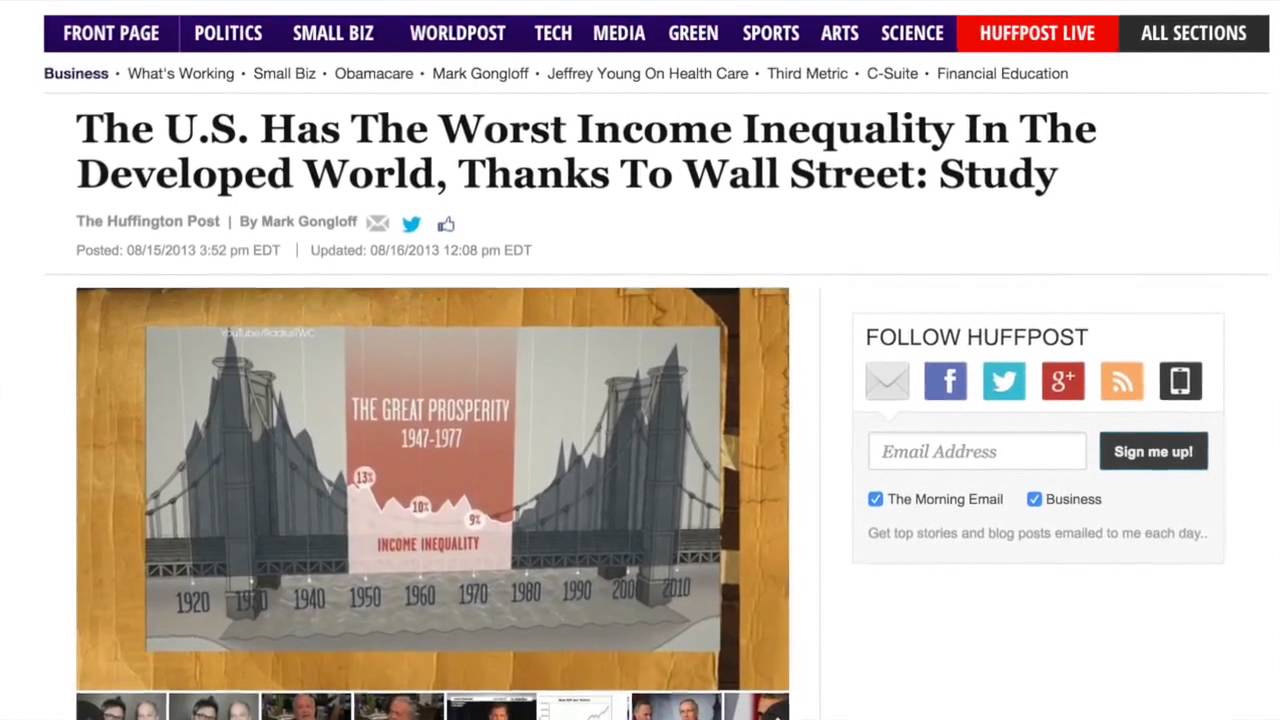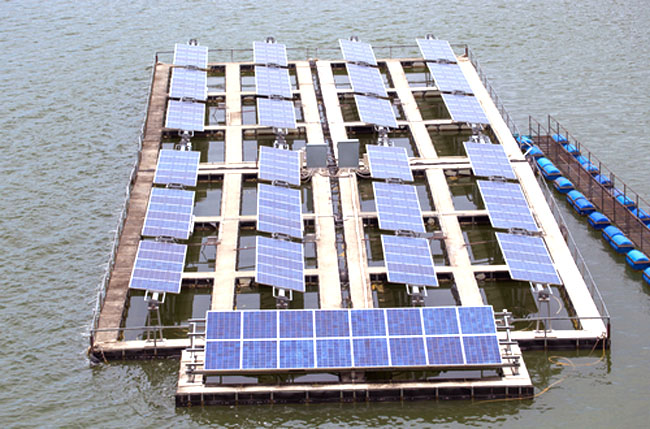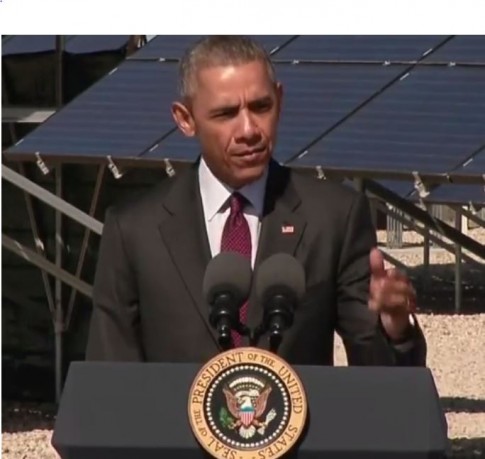McDonalds Shuts Down Hundreds Of Stores Worldwide As Sales Decline
It was announced this week that McDonalds will be closing hundreds of stores worldwide, as global sales continue to decline. To begin the year of 2015, the infamous fast food chain will be closing at least 700 of its locations, which is double the number that was planned for closure earlier this year.
In the first 3 months of 2015, McDonalds saw a 2.3% decrease in sales and a 28% drop in operating revenue, continuing a trend of loss that the company has been experiencing for years.
Speaking in a conference call with the Wall Street Journal earlier this week, the company’s new CEO, Steve Easterbrook said that massive changes will be needed to improve McDonald’s struggling reputation.
“I think there is a hunger and an interest in our business to embrace change. McDonald’s management team is keenly focused on acting more quickly to better address today’s consumer needs, expectations and the competitive marketplace,” Easterbrook said.
Over 100 of the recent closures happened in Japan, where McDonalds has faced a number of scandalds relating to the quality of their food.
It is not hard to see that decline of McDonalds is happening, even in your own local neighborhood. Where once there were lines wrapped around the parking lot at multiple McDonalds locations in every town, there are now very sparse crowds at the restaurant, even in high traffic areas and during busy times.
In recent months, we have been paying close attention to how McDonalds and other popular junk food brands are falling out of favor as people become more conscious about their diets. GMO food in general is also quickly losing trust among consumers.
Several months ago, it was reported that organic food sales in the United States had risen to over $35 billion per year. This number is expected to climb as interest in organic food continues to grow exponentially.
Recently, we reported that junk-soda giant Coca-Cola is facing major financial challenges as sales steadily decline. Some fast food restaurants, such as Burger King, have been removing sodas from their kids meals, in an attempt to seem more concerned with health.
John Vibes writes for True Activist and is an author, researcher and investigative journalist who takes a special interest in the counter culture and the drug war. This article (McDonalds Shuts Down Hundreds Of Stores Worldwide As Sales Decline) is free and open source. You have permission to republish this article under a Creative Commons license with attribution to the author and True Activist. .
Legendary Rocker Neil Young Will Release an Entire Album to Boycott Monsanto
Rock and roll has always been steeped in defiance of authority, and it has also been used as a tool for social change and protest for decades as well.
While most musicians choose to protest topics like illegal wars and occupations, or specific problems and injustices in certain songs, rarely if ever do they devote an entire album to protesting a single corporate entity.
But that’s exactly what one legendary rock star is planning to do by mid-June 2015 with the release of a new album titled ‘The Monsanto Years.’
Neil Young Boycott Against Monsanto Continues
First dipping his toes into the water by announcing a switch to organic cotton t-shirts and a boycott of GMO cotton ones, Neil Young, the rock star in question, is now going all-in with his new LP.
The album will feature Willie Nelson’s sons Lukas and Micah as well according to this report from Rolling Stone, and it will be released on June 16 th with an accompanying tour set to kick off on July 5 th at the Summerfest in Milwaukee, Wis., titled the Rebel Content Tour.
Nelson is a co-founder of Farm Aid, a concert series which helps support small farmers, the very kind that have been under attack from Monsanto via lawsuits and false promises attached to their genetically modified seeds and agricultural chemicals.
Nelson’s sons currently are members of a band called Promise of the Real, which will join Young for the album.
Among the Promise of the Real’s newest tracks are titles like ‘Seeds,’ ‘Rock Starbucks,’ and ‘Monsanto Years,’ which Rolling Stone reported could be part of the joint album especially considering their titles which seem to be hand-crafted for inclusion on ‘The Monsanto Years.’
Previously, Young has also called for a boycott against Starbucks for being a part of the Grocery Manufacturers Association which sued the state of Vermont over its GMO labeling law.
The Starbucks boycott was met by a considerable amount of media coverage, showcasing yet again the power of the celebrity in finally bringing certain issues to the mainstream.
For more information or for Young’s upcoming tour dates, you can check out the article here. Also, check out the video below of a secret show Young played with Promise of the Real in California on April 16, via the San Luis Obispo Tribune.
Apple Purchases Land The Size Of San Francisco For Conservation And Is Building 2 New Solar Farms In China
We can’t help but be sceptical when we hear a mega-company like Apple announce it will do something in the greater interest of mankind. We know and have heard -as we’re sure you have too- that Apple is moving copious amounts of cash to parts of the world where they are exempt from tax. Could this be how they reconcile their ability to share and be human? (*note: Apple is not a human)
I (Lawrence) certainly won’t disagree, that the government who claims right to this taxable profit may be the worst people to give the money to in any case (it will be more money to mismanage). However, I would like to point out that Apple executives are, also, in no way qualified to claim the right to stewart the whole planet on our behalf, on the behalf of those living, dying and thriving in a given community. So here is an article written by True Activist, consider it.
Apple is contributing to a cleaner, healthier environment in quite a few ways.
Recently the maker of the iPhone and Mac computers announced that it has just purchased 36,000 acres of forest land for the express purpose of protecting it from future development, as well is already constructing two new solar farm projects in China. Their aim is to duplicate clean energy efforts abroad which have already been started in the United States.
The joint venture undertaken with SunPower will produce two new 20 megawatt solar farms. As stated above, construction in China has already begun, and 2 MW of solar capacity are already sending power to the grid. “The technology combines single-axis tracking technology with rows of parabolic mirrors, reflecting light onto high efficiency SunPower Maxeon cells, which are the world’s most efficient commercially available mass-produced solar cells. Completion of the projects is expected in the fourth quarter of 2015. […] The projects are expected to provide up to 80 million kilowatt-hours per year while also protecting the ecosystem.”
The super-technology company is contributing to a greener planet in more ways than one. To ensure that the packaging for its products comes from sustainable managed forests, it has partnered with The Conservation Fund to manage 36,000 acres of forest that have been purchased in Maine and North Carolina. As shared by Inhabitant, ‘The forests will be protected from development, staying forests forever, though some wood will be sustainable harvested from them.’
Said Larry Selzer, president and CEO of The Conservation Fund, “Apple is clearly leading by example – one that we hope others will follow.”

“By all accounts, the loss of America’s working forests is one of our nation’s greatest environmental challenges. The initiative announced today is precedent-setting,” said Selzer.
Apple’s efforts to preserve the environment have begun to change the tune of some of its critics, including Greenpeace. Said the non-profit’s USA Senior IT Sector Analyst Gary Cook, “Apple’s announcement today is a significant first step toward addressing its energy footprint in China, and sets an important precedent for other companies that have operations in China: they can take action to power their operations with renewable energy.”
In addition to their conservation plans in the States and abroad, Apple intends for its new headquarters in California to be 100 percent solar-powered by the time of its completion.
This is just one example of how successful businesses can reduce their environmental impact and help shape a greener, cleaner world.
.
None of the world’s top industries would be profitable if they paid for the natural capital they use
The notion of “externalities” has become familiar in environmental circles. It refers to costs imposed by businesses that are not paid for by those businesses. For instance, industrial processes can put pollutants in the air that increase public health costs, but the public, not the polluting businesses, picks up the tab. In this way, businesses privatize profits and publicize costs.
While the notion is incredibly useful, especially in folding ecological concerns into economics, I’ve always had my reservations about it. Environmentalists these days love speaking in the language of economics – it makes them sound Serious – but I worry that wrapping this notion in a bloodless technical term tends to have a narcotizing effect. It brings to mind incrementalism: boost a few taxes here, tighten a regulation there, and the industrial juggernaut can keep right on chugging. However, if we take the idea seriously, not just as an accounting phenomenon but as a deep description of current human practices, its implications are positively revolutionary.
To see what I mean, check out a recent report [PDF] done by environmental consultancy Trucost on behalf of The Economics of Ecosystems and Biodiversity (TEEB) program sponsored by United Nations Environmental Program. TEEB asked Trucost to tally up the total “unpriced natural capital” consumed by the world’s top industrial sectors. (“Natural capital” refers to ecological materials and services like, say, clean water or a stable atmosphere; “unpriced” means that businesses don’t pay to consume them.)
It’s a huge task; obviously, doing it required a specific methodology that built in a series of assumptions. (Plenty of details in the report.) But it serves as an important signpost pointing the way to the truth about externalities.
Here’s how those costs break down:
The majority of unpriced natural capital costs are from greenhouse gas emissions (38%), followed by water use (25%), land use (24%), air pollution (7%), land and water pollution (5%), and waste (1%).
So how much is that costing us? Trucost’s headline results are fairly stunning.
First, the total unpriced natural capital consumed by the more than 1,000 “global primary production and primary processing region-sectors” amounts to $7.3 trillion a year – 13 percent of 2009 global GDP.
(A “region-sector” is a particular industry in a particular region – say, wheat farming in East Asia.)
Second, surprising no one, coal is the enemy of the human race. Trucost compiled rankings, both of the top environmental impacts and of the top industrial culprits.
Here are the top five biggest environmental impacts and the region-sectors responsible for them:

The biggest single environmental cost? Greenhouse gases from coal burning in China. The fifth biggest? Greenhouse gases from coal burning in North America. (This also shows what an unholy nightmare deforestation in South America is.)
Now, here are the top five industrial sectors ranked by total ecological damages imposed:

It’s coal again! This time North American coal is up at number three.
Trucost’s third big finding is the coup de grace. Of the top 20 region-sectors ranked by environmental impacts, none would be profitable if environmental costs were fully integrated. Ponder that for a moment: None of the world’s top industrial sectors would be profitable if they were paying their full freight. Zero.
That amounts to an global industrial system built on sleight of hand. As Paul Hawken likes to put it, we are stealing the future, selling it in the present, and calling it GDP.
This gets back to what I was saying at the top. The notion of “externalities” is so technical, such an economist’s term. Got a few unfortunate side effects, so just move some numbers from Column A to Column B, right?
But the UNEP report makes clear that what’s going on today is more than a few accounting oversights here and there. The distance between today’s industrial systems and truly sustainable industrial systems – systems that do not spend down stored natural capital but instead integrate into current energy and material flows – is not one of degree, but one of kind. What’s needed is not just better accounting but a new global industrial system, a new way of providing for human wellbeing, and fast. That means a revolution.
Why Revolution? Because We Love The People!
Why must we stand up against police brutality? Because we Love the people! For the bombing of innocent women and children? Because we Love the people! For the misappropriation of resources? Because we Love the people! For the slaughter, ruination and destruction of our ecosystem? Because we Love the people! Why do we need revolution? Our friends at …
In Landmark Case, Dutch Citizens Sue Their Government Over Failure To Act On Climate Change
CREDIT: Shutterstock
For the first time ever, climate change is being taken to court over human rights.
Public arguments are scheduled to begin Tuesday in the Netherlands, where nearly 900 Dutch citizens have filed a lawsuit against their government for failing to effectively cut greenhouse gas emissions and curb climate change.
Hailed by Dutch press as a ” landmark legal case,” it’s the first European example of a group of citizens attempting to hold a government responsible for inefficient climate policies, and the first time that existing human rights laws have been the basis of a case.
“What we are saying is that our government is co-creating a dangerous change in the world,” Roger Cox, a legal adviser for the plaintiffs, told RTCC. “We feel that there’s a shared responsibility for any country to do what is necessary in its own boundaries to mitigate greenhouse gas emissions as much as is needed.”
The plaintiffs will ask the court to force the Dutch government to reduce its greenhouse gas emissions by between 25 and 40 percent relative to their 1990 levels by 2020 – reductions that the IPCC has said developed nations must make if the world wants a 50 percent chance of avoiding a 2 degree Celsius increase in global temperature. Currently, the European Union has committed to reducing its emissions 40 percent by 2030, but the Netherlands has not made any specific commitments, saying instead that it intends to adopt any international agreement that comes from the Paris climate talks later this year.
To the Dutch citizens who are part of the class action, that promise isn’t enough. In 2012, the sustainability-focused Urgenda Foundation sent a letter to the government demanding more immediate action on climate change. When they received no response, Urgenda began looking for citizens to support a court case against the Dutch government. A year later, Urgenda, along with nearly 900 co-plaintiffs, filed a case against the Dutch government.
The plaintiffs represent a wide cross-section of Dutch society, hailing from a diverse set of age groups and professions. One of the more notable plaintiffs, Joos Ockels, is the wife of Wubbo Ockels, the first Dutch citizen in space and a committed climate advocate until his death last year.
Nearly a quarter of the Netherlands is below sea-level, which forced the country to become an early adopter of climate adaptation strategies and renewable energy. But while the adaptation strategies meant to shield the country from rising sea level and more frequent storms are still in place, it has begun to fall behind when it comes to clean energy. According to the International Energy Agency, the Netherlands lags behind much of the European Union in renewable energy sources. In 2013, 4.5 percent of energy consumed in the Netherlands came from renewable sources, far below the country’s goal of getting 14 percent of its energy from renewables by 2020.
According to Dutch News, Urgenda claims that the Dutch government has acknowledged that its actions are “insufficient” to prevent the dangers associated with a warming world.
“The Netherlands is therefore knowingly exposing its own citizens to dangerous situations, in which they and their children will suffer serious hardship,” Urgenda said. “The Dutch Supreme Court has consistently upheld the principle that the government can be held legally accountable for not taking sufficient action to prevent foreseeable harm. Urgenda argues that this is also the case with climate change.”
Earlier this year, the supporters of the Dutch case claimed a significant victory with the launch of the Oslo Principles on Global Climate Change Obligations, which hold that governments have the legal obligation to prevent the harmful effects of climate change, regardless of any preexisting international agreements. Though the agreement is mostly a template for courts, not a hard and fast protocol, it claims Jaap Spier, advocate-general of the Netherlands Supreme Court, as one of its primary supporters. According to the BBC, Spier has been quoted in the Dutch press saying that courts could be used to make countries adopt ” effective climate policies.”
Urgenda hopes that this lawsuit will inspire others to use courts to hold countries accountable for failing to act on climate change. In Belgium, over 12,000 people have already pledged their support for a court case holding the government responsible for its actions on climate change. In the United States, the Oregon-based nonprofit Our Children’s Trust has been using similar tactics across the country, launching a suite of youth-led lawsuits against state and federal entities for failing to act on climate change. One such case in Oregon began oral arguments last week after being initially shot down in 2012.
Leonardo DiCaprio Unveils Groundbreaking Eco-Resort in Belize
When Leonardo DiCaprio isn’t starring in award-winning movies, he’s working to save the planet. He sits on the boards of several environmental nonprofits, is well known for his generous contributions to environmental causes, lends his voice as narration in powerful environmental films and was recently appointed as UN Messenger for Peace by UN Secretary-General Ban Ki-Moon who called DiCaprio a “new voice for climate advocacy.” Now, DiCaprio is launching a new project: Blackadore Caye, a Restorative Island.
When the island resort in Belize opens in 2018, which is owned in part by DiCaprio, it will be replete with all of the standard features of a luxury resort-“sprawling villas, infinity pools and stunning sunset views,” says The New York Times. But the resort will be wholly different than most. The “restorative” aspect doesn’t only refer to its hopefully healing effect on visitors, but also on the island itself. Overfishing, an eroding coastline and deforestation of the island’s mangrove trees have taken their toll. DiCaprio has teamed up with Paul Scialla, of Delos, a New York City-based developer, to restore the island’s natural environment.
“The villas for guests on Blackadore Caye will be built atop a massive platform that stretches in an arc over the water, with artificial reefs and fish shelters underneath,” says The New York Times. “A nursery on the island will grow indigenous marine grass to support a manatee conservation area, and mangrove trees will be replanted, replacing invasive species.” A team of researchers will monitor the resort’s impact on its surroundings.
“The main focus is to do something that will change the world,” DiCaprio told The New York Times. “I couldn’t have gone to Belize and built on an island and done something like this, if it weren’t for the idea that it could be groundbreaking in the environmental movement.” DiCaprio fell in love with Belize on a scuba diving trip in 2005, and soon purchased Blackadore Caye for $1.75 million with Jeff Gram, the owner of another island resort in Belize.
“Belize is truly unique,” says DiCaprio. “It has the second largest coral reef system in the world, and it has some of the most biodiverse marine life, like the manatee population and almost every species of fish you can imagine. Then there are the Mayan temples and the culture.”
Ecotourism has become a booming industry in recent years with 8 billion ecotourist visits a year worldwide. But Scialla and DiCaprio don’t want this to be like some resorts that pay a lot of lip service to environmental stewardship but have little to show for it. “The idea at Blackadore Caye is to push the envelope for what sustainability means-moving the idea beyond environmental awareness into restoration,” Scialla said. “We don’t want to just do less harm or even have zero impact, but to actually help heal the island, to make it better than before.”
And DiCaprio realizes the stakes are high, which is why he has a bold vision for the island. “With the onset of climate change, there are huge challenges, so we want the structure to not only enhance and improve the environment, but to be a model for the future.”
Protesters Try to Stop Nestle Water Bottling Plant in South Sacramento
SOUTH SACRAMENTO –
In the darkness of the early morning hours protesters gathered at the driveway of the Nestlé water bottling plant.
Armed with signs and props like torches and pitch forks they made their position known.
Environmental and water rights activists blockaded all truck entrances to the plant.
This is a similar scene to a protest back in October of last year. The plan this morning was to shut down the company’s operations.
At issue: the amount of water the company uses to sell for profit, especially during a drought.
But Nestle says they are in compliance, and pay the same rate for water as any other metered business or manufacturer in the city of Sacramento.
Nestlé’s spokesperson went on to say the company believes in people’s right to protest and that like all businesses in California they are looking at ways to conserve.
In 2014 Nestlé says it used 50 million gallons from the Sacramento Municipal Water Supply, which they say is a fraction of one percent of total water demand within the city of Sacramento.
Brazil to Build World’s Largest Floating Solar Farm Amidst Devastating Drought
With Brazil’s historic drought drying up its hydroelectric plants, the South American country is turning to solar power to help relieve its foreboding energy crisis.
The nation announced that within four months, it will commence pilot tests of a gigantic floating solar farm located atop the Balbina hydroelectric plant in the Amazon. It’s currently unclear how physically large the floating farm will be, but the enormous reservoir it will sit on covers 2,360 square kilometers.
At 350 megawatts, Brazil’s ambitious project would easily trump Japan’s currently largest 13.4 megawatt floating solar power plant in terms of power output. To put that in another perspective, the largest solar farm in the world is the 550 megawatt Desert Sunlight Solar Farm in California.
Diversifying energy sources is clearly a necessity for the notoriously parched country. Brazil is experiencing its worst drought in four decades, causing electricity blackouts in many regions. Below-average rainfall in the last few years have depleted its reservoirs, thus gutting its formerly plentiful supply of hydropower, which supplies more than three-quarters of the country’s electricity, according to the U.S. Energy Information Administration.
As Climate News Network reported, “the reservoirs in the drought-affected region could fall to as little as 10 percent of their capacity, which … Mines and Energy Minister Eduardo Braga admits would be ‘catastrophic’ for energy security.”
While the sunny country has tremendous potential for solar power, Brazil has been slow to embrace this form of renewable energy. It was only in October 2014, when Brazil made its first foray into this sector with the construction of 31 solar parks, its first large-scale solar project with a combined capacity of 1,048 megawatts.
A shift to solar energy might be fitting, as the Balbina Dam (where the proposed solar farm will eventually sit) has been criticized for emitting more greenhouse gases than a coal-fired power plant.
“We are adding technological innovation, more transmission lines, diversifying our energy generation source, introducing solar energy in a more vigorous manner and combining solar energy with hydroelectric energy,” Braga told reporters about the solar farm project.
“We are preparing ourselves to win the challenge in 2015 and be able to deliver a model and an electric system starting in 2016 which will be cheaper, more secure and with greater technological innovation,” Braga said. Electricity produced at the farm is expected to cost between $69 and $77 per megawatt hour, reports say.
Iceland looks at ending boom and bust with radical money plan
Mr Sigurjonsson said the problem each time arose from ballooning credit during a strong economic cycle.
Frosti Sigurjonsson’s report, entitled A Better Monetary System For Iceland
He argued the central bank was unable to contain the credit boom, allowing inflation to rise and sparking exaggerated risk-taking and speculation, the threat of bank collapse and costly state interventions.
In Iceland, as in other modern market economies, the central bank controls the creation of banknotes and coins but not the creation of all money, which occurs as soon as a commercial bank offers a line of credit.
The central bank can only try to influence the money supply with its monetary policy tools.
Under the so-called Sovereign Money proposal, the country’s central bank would become the only creator of money.
“Crucially, the power to create money is kept separate from the power to decide how that new money is used,” Mr Sigurjonsson wrote in the proposal.
“As with the state budget, the parliament will debate the government’s proposal for allocation of new money,” he wrote.

Iceland’s three largest banks collapsed
Banks would continue to manage accounts and payments, and would serve as intermediaries between savers and lenders.
Mr Sigurjonsson, a businessman and economist, was one of the masterminds behind Iceland’s household debt relief programme launched in May 2014 and aimed at helping the many Icelanders whose finances were strangled by inflation-indexed mortgages signed before the 2008 financial crisis.
The small Nordic country was hit hard as the crash of US investment bank Lehman Brothers caused the collapse of its three largest banks.
Iceland then became the first western European nation in 25 years to appeal to the International Monetary Fund to save its battered economy.
Its GDP fell by 5.1pc in 2009 and 3.1pc in 2010 before it started rising again.
Study Shows That The Chemical Used To Clean Up BP Oil Spill Is Completely Toxic
Researchers at the University of Alabama recently published a study suggesting that Corexit EC9500A, the primary oil dispersant used in the Deep Horizon oil spill in the Gulf of Mexico, is causing major harm to the local eco-system.
According to the study, Corexit damages epithelium cells in both humans and marine animals.
The study was published in PLOS ONE this week and studied the effect that the chemical had on the bodies of humans, zebrafish, and blue crabs.
“There were some 48,000 workers involved in the cleanup operations, and it is possible that workers were exposed to Corexit via inhalation. Cough, shortness of breath and sputum production were among symptoms expressed by workers, ” Veena Antony, one of the researchers said.
According to the study, “The evidence that Corexit causes structural and functional abnormalities in airway tissue includes dispersant-induced cell detachment, edema, contraction in cell diameter and increased permeability.”
” Corexit exposure led to an increase in NOX4 activation, and there is evidence that the increase of NOX4 is tied to increased apoptosis. On the other hand, HO-1 was also activated following Corexit exposure. We also noted that the introduction of HO-1 following injury served to remediate the effects of that injury,” Antony added.
At the time of the spill, many activists had spoken out against the use of Corexit, but it was used indiscriminately anyway, as if it was the only option. It is possible that these new studies could help to prevent this toxic chemical from being used in the future.
” In summary, our results indicate that respiratory epithelial surfaces across phylogenetic species are sensitive to injury by Corexit. However, the enzyme HO-1 protects against inflammation and cell death induced by Corexit. Unfortunately, the likelihood of another oil spill is high, and the need to use dispersal agents will remain. We propose that upregulating HO-1 may offer a novel therapeutic approach for treating dispersant-induced injury and apo’ptosis by enhancing the antioxidant and anti-apoptotic ability of the epitheliu m,” Antony said.
The video below is several years old, but it shows a prior independent study conducted by engineer Marco Kaltofen, which also shows the effects of Corexit.
John Vibes writes for True Activist and is an author, researcher and investigative journalist who takes a special interest in the counter culture and the drug war.
.
California Imposes First Mandatory Water Restrictions to Deal With Drought
PHILLIPS, Calif. – Gov. Jerry Brown on Wednesday ordered mandatory water use reductions for the first time in California’s history, saying the state’s four-year drought had reached near-crisis proportions after a winter of record-low snowfalls.
Mr. Brown, in an executive order, directed the State Water Resources Control Board to impose a 25 percent reduction on the state’s 400 local water supply agencies, which serve 90 percent of California residents, over the coming year. The agencies will be responsible for coming up with restrictions to cut back on water use and for monitoring compliance. State officials said the order would impose varying degrees of cutbacks on water use across the board – affecting homeowners, farms and other businesses, as well as the maintenance of cemeteries and golf courses.
While the specifics of how this will be accomplished are being left to the water agencies, it is certain that Californians across the state will have to cut back on watering gardens and lawns – which soak up a vast amount of the water this state uses every day – as well as washing cars and even taking showers.
“People should realize we are in a new era,” Mr. Brown said at a news conference here on Wednesday, standing on a patch of brown and green grass that would normally be thick with snow at this time of year. “The idea of your nice little green lawn getting watered every day, those days are past.”
Owners of large farms, who obtain their water from sources outside the local water agencies, will not fall under the 25 percent guideline. State officials noted that many farms had already seen a cutback in their water allocations because of the drought. In addition, the owners of large farms will be required, under the governor’s executive order, to offer detailed reports to state regulators about water use, ideally as a way to highlight incidents of water diversion or waste.
Because of this system, state officials said, they did not expect the executive order to result – at least in the immediate future – in an increase in farm or food prices.
State officials said that they were prepared to enforce punitive measures, including fines, to ensure compliance, but that they were hopeful it would not be necessary to do so. That said, the state had trouble reaching the 20 percent reduction target that Mr. Brown set in January 2014 when he issued a voluntary reduction order as part of declaring a drought emergency. The state water board has the power to impose fines on local water suppliers that fail to meet the reduction targets set by the board over the coming weeks.
The governor announced what amounts to a dramatic new chapter in the state’s response to the drought while attending the annual April 1 measuring of the snowpack here in the Sierra Nevada. Snowpacks are critical to the state’s water system: They store water that falls during the wet season, and release it through the summer.
In a typical year, the measure in Phillips is around five or six feet, as Frank Gehrke, chief of the California Cooperative Snow Survey Program, indicated by displaying the measuring stick brought out annually. But on Wednesday, Mr. Brown was standing on an utterly dry field after he and Mr. Gehrke went through the motions of measuring a snowpack. State officials said they now expected the statewide snowpack measure to be about 6 percent of normal.
“We are standing on dry grass, and we should be standing on five feet of snow,” Mr. Brown said. “We are in an historic drought.”
Water has long been a precious resource in California, the subject of battles pitting farmer against city-dweller and northern communities against southern ones; books and movies have been made about its scarcity and plunder. Water is central to the state’s identity and economy, and a symbol of how wealth and ingenuity have tamed nature: There are golf courses in the deserts of Palm Springs, lush gardens and lawns in Los Angeles, and vast expanses of irrigated fields of farmland throughout the Central Valley.
Given that backdrop, any effort to force reductions in water use could be politically contentious, as Mr. Brown himself acknowledged. “This will be somewhat of a burden – it’s going to be very difficult,” he said. “People will say, ‘What about the farmers?’ Farmers will say, ‘What about the people who water their lawns?’ “
Within hours of Mr. Brown’s announcement, Representative Kevin McCarthy, the California Republican who is the House majority leader, announced plans to renew efforts in Congress to pass legislation requiring the building of two huge water facilities in the state. The efforts had been blocked by Democrats concerned that the water projects would harm the environment and damage endangered species of fish.
“The current drought in California is devastating,” Mr. McCarthy said. “Today’s order from the governor should not only alarm Californians, but the entire nation should take notice that the most productive agriculture state in the country has entered uncharted territory.”
“I’m from the Central Valley, and we know that we cannot conserve or ration our way out of this drought,” he said.
The newly mandated 25 percent cut is in relation to total water use in the state in 2013. Cuts will vary from community to community, reflecting that per capita water use reduction has been better in some areas than others. In addition, the state and local governments will offer temporary rebate programs for homeowners who replace dishwashers and washing machines with water-efficient models.
Mr. Brown said the state would impose water-use restrictions on golf courses and cemeteries and require that nonpotable water be used on median dividers.
Lawns consume much of the water used every year in California, and the executive order calls for the state, working with local governments, to replace 50 million acres of ornamental turf with planting that consumes less water.
The order also instructs water authorities to raise rates on heavy water users. Those pricing systems, intended to reward conservers and punish wasters, are used in some parts of this state and have proved effective, state officials said.
Felicia Marcus, the chairwoman of the State Water Resources Control Board, said that California would leave it to local water providers to decide how to enforce the reductions on homeowners and businesses. She said she anticipated that most of the restrictions would be aimed at the outdoor use of water; many communities have already imposed water restrictions on lawns and gardens, but Ms. Marcus suggested they had not gone far enough.
“We are in a drought unlike one we’ve seen before, and we have to take actions that we haven’t taken before,” she said. “We are not getting the level of effort that the situation clearly warrants.”
Mark W. Cowin, the director of the California Department of Water Resources, said the state would tightly monitor compliance, in the hope that would be enough to accomplish the 25 percent reduction. If it is not, the order authorizes water suppliers to penalize offenders.
“We are looking for success, not to be punitive,” Mr. Cowin said. “In the end, if people and communities don’t comply, there will be repercussions, including fines.”
Obama Unveils Smart Plan To Combat Climate Change While Training 75,000 Vets For Jobs

while speaking in Utah, President Obama announced a new program that will combat climate change while training 75,000 veterans for jobs in the solar industry.
The President said:
I am announcing a new goal to train 75,000 workers to enter the solar industry by 2020. As part of this, we’re creating what we’re calling a solar ready vets program that’s modeled after some successful pilot initiatives that have already been established over the last several years.
It’s going to train transitioning military personnel for careers in this growing industry at ten bases including right here at Hill, and as part of this effort we’re also going to work with states to enable more veterans to use the post-9/11 GI Bill for solar job training.
It’s one of the many steps we’re taking to help nearly 700,000 military veterans and spouses get a job. In fact, about thirty percent of the federal workforce is now made up of veterans. I’ve said it before, and I think employers are starting to catch on if you really want to get the job done, hire a veteran.
The plan is smart because it trains tens of thousands of transitioning military personnel and spouses for a civilian job in an industry that is growing ten times faster than the national average. The president also pointed out the military bases that get a substantial percentage of their energy from the sun save money that can applied towards other goals and missions.
The nation has undergone a dramatic shift from a president who fought a foreign war for oil (Bush and Iraq) to a forward thinking president who is using growing clean energy industry industries to train veterans of the Bush wars for good paying jobs.
The plan that the President unveiled isn’t just good politics. It’s also common sense. No veteran should have to take a low-paying service industry job because they can’t find anything else. It is part of our national obligation to everything possible to help those who served succeed when they return home.
President Obama is creating opportunities for today’s veterans to acquire the jobs of tomorrow.
MIT Climate CoLab seeks high-impact ideas on how to tackle climate change
The MIT Climate CoLab has announced 22 contests that seek high-impact ideas on how to tackle climate change.
A project of the Massachusetts Institute of Technology Center for Collective Intelligence, the Climate CoLab seeks to harness the knowledge and expertise of thousands of experts and non-experts across the world to help solve this massive, complex issue.
“As systems like Linux and Wikipedia have shown, people from around the world – connected by the Internet – can work together to solve complex problems in very new ways,” says MIT Sloan School of Management Professor Thomas Malone, director of the MIT Center for Collective Intelligence and principal investigator for the Climate CoLab project. “In the Climate CoLab, we’re applying this approach to one of the world’s most difficult problems – climate change.”
The Climate CoLab has a rapidly growing community of over 30,000 members from across the world. Anyone is welcome to join the platform to submit their own ideas, or comment on and show support for other proposals on the site.
Together, the contests cover a broad set of sub-problems that lie at the heart of the climate change challenge, including: decarbonizing energy supply, shifting public attitudes and behavior, adapting to climate change, geoengineering, transportation, waste management, reducing consumption, and others.
The popular U.S. Carbon Price contest is returning this year, seeking innovative policy and political mobilization strategies on how to implement a carbon price in the United States. Serving as advisors for this contest are former U.S. Secretary of State, George P. Shultz; former U.S. Rep. (R-SC) and current director of the Energy and Enterprise Initiative Bob Inglis; and former U.S. Rep. (D-IN) and current president of Resources for the Future, Phil Sharp.
A number of contests are run in collaboration with organizations such as the World Bank Negawatt Challenge ( Urban Energy Efficiency), the MIT Sloan Latin America Office ( Energy Solutions for Latin America), and the City of Somerville, Massachusetts ( Atypical Solutions for Going Carbon Neutral).
In addition, this year the Climate CoLab team announced a new set of contests in which people can create climate-action plans for major countries and for the whole world. In these contests, members combine proposals that have been submitted in other contests and use a suite of climate modeling tools to project the real-world climate impacts of the plans they create.
All contest winners will have an opportunity to present to people who can support the implementation of their ideas, including policy makers, business executives, and NGO and foundation officials. They will also be invited to showcase their proposals at MIT this fall, where a $10,000 grand prize will be awarded. See highlights from last year’s Climate CoLab conference at climatecolab.org/conference2014.
In addition to submitting ideas, the Climate CoLab also welcomes people from around the world to offer feedback and support proposals they find the most promising.
Submissions are due by May 16 at 11:59:59 p.m. EDT. Enter soon to receive feedback from Climate CoLab community members and the experts who are overseeing the contests. To submit a proposal, or read and comment on other proposals, visit climatecolab.org.
EPA Approves GMO Weed Killer Enlist Duo in Nine More States ” EcoWatch
Ignoring the World Health Organization’s (WHO) conclusion that the crop chemical glyphosate is “probably carcinogenic to humans,” the U.S. Environmental Protection Agency has approved the glyphosate-containing herbicide Enlist Duo for agricultural use in nine more states. It had previously been approved for use on genetically engineered crops in six states.
Enlist Duo’s active ingredients are glyphosate and 2,4-D, both of which have been shown to increase the risk of non-Hodgkin lymphoma.
“This poorly conceived decision by EPA will likely put a significant number of farmers, farm workers and rural residents at greater risk of being diagnosed with cancer,” said Scott Faber, senior vice president for government affairs at Environmental Working Group. “The agency simply ignored a game-changing new finding from the world leading cancer experts, and has instead decided the interests of biotech giants like Dow and Monsanto come first.”
Last month, the International Agency for Research on Cancer, a branch of the WHO, elevated its risk assessment of glyphosate to “probably carcinogenic to humans” based on a review of the evidence by a panel of 17 leading oncology experts.
Glyphosate is the most used pesticide in the U.S. The bulk of it is applied to genetically engineered corn and soybean crops. It is also the main ingredient in Monsanto’s signature weed killer RoundUp.
EPA’s decision will allow Enlist Duo to be sprayed on fields of genetically engineered corn and soybeans in Arkansas, Kansas, Louisiana, Minnesota, Mississippi, Missouri, Nebraska, North Dakota and Oklahoma. It was previously approved for use in Illinois, Indiana, Iowa, Ohio, South Dakota and Wisconsin.
“Instead of taking steps to protect the public from toxic chemicals, the EPA has only sped up the pesticide treadmill that will now put millions more people at risk,” added Faber. “These toxic herbicides easily make their way off farm fields and into the air and water we and our children breathe and drink.”
YOU MIGHT ALSO LIKE
Monsanto Demands World Health Organization Retract Report That Says Roundup Is Linked to Cancer
Monsanto’s Roundup – Most Popular Weed Killer in U.S. – ‘Probably’ Causes Cancer, WHO Report Says
Why Keystone XL Opponents Care About a Canadian Pipeline
TransCanada on Thursday announced a two-year delay to its plans to move the Canadian tar sands. The company is cancelling its plans to build a controversial export terminal in Quebec, citing environmental concern over the endangered beluga whale. This means a delay to plans for finishing the Energy East pipeline, now set for 2020. In the meantime, TransCanada will search for a new location for its port.
For once, then, Canadian oil news isn’t about the TransCanada-owned Keystone XL, which has faced a six-year delay as the Obama administration sits on a decision to issue a permit. At least not directly, anyway. Energy East, once completed, would be even bigger than Keystone XL, delivering 1.1 million barrels of crude oil per day, compared to Keystone’s 800,000 barrels. As its name implies, the pipeline would run from the Alberta tar sands eastward to the shipping lanes of the Atlantic coast.
Not only are Keystone and Energy East similar battles, but proponents (and opponents) often tie the two pipelines’ fates together. Keystone opponents say building that pipeline would ensure tar sands extraction continues at a rapid pace, setting the world on track for severe climate change. Proponents argue that Keystone doesn’t matter either way, because other pipelines like Energy East make tar sands development inevitable. If the United States doesn’t build its pipeline, they say, Americans will miss out on the economic benefits. “We don’t think there’s any way that the oil will stay in the ground,” Matt Letourneau, a spokesperson for the U.S. Chamber of Commerce, said last year. “Certainly the market will find a way.”
But so long as there are delays, tar sands development isn’t inevitable because Energy East’s future, like Keystone’s, is far from settled. Oil companies are still in the middle of working out how to get the landlocked tar sands to the coasts for refining and shipment, and during their delays on multiple fronts, Keystone isn’t a futile fight.
The delay could provide a boost to organizers trying to delay other tar sands projects. Each of these pipelines face a similar environmental playbook: Delay as long as possible in the hopes that it becomes unprofitable or impossible for companies to pursue their plans. Keystone has faced years of delay, and now Energy East faces its own uncertain future. Environmentalists weren’t the only reason for TransCanada’s change of plans. Because oil prices are low right now, companies have little incentive to pursue their plans to extract costly tar sands for little profit.
TransCanada still has a strong incentive to find a new port and finish construction. Oil prices surely will rebound eventually, making the tar sands profitable once again.
“I don’t think you can look at this as a major impediment to the future of oil sands development but it certainly speaks to the opposition to pipelines, the anxiety about shipments of oil and, of course, to the increasing importance of environmental protection to the public,” Andrew Leach, an economist with the University of Alberta, said. “The beluga is an iconic species, so I think the writing was on the wall for this once the risk to habitat was made clear, in particular in Quebec.”
In the short-term, however, this is a win for environmentalists. And it may even help them in their fight against Keystone.
Rebecca Leber is a staff writer for The New Republic.
One Step Closer to Artificial Leaves That Convert Water to Fuel
PASADENA, California, April 1, 2015 (ENS) – Inspired by a chemical process found in leaves, researchers at the California Institute of Technology have developed an electrically conductive film that could lead to devices that harness sunlight to split water (H2O), safely creating hydrogen fuel.
When applied to semiconducting materials such as silicon, the nickel oxide film facilitates an important chemical process in the solar-driven production of fuels such as methane or hydrogen.
“We have developed a new type of protective coating that enables a key process in the solar-driven production of fuels to be performed with record efficiency, stability, and effectiveness, and in a system that is intrinsically safe and does not produce explosive mixtures of hydrogen and oxygen,” says Nate Lewis, a distinguished professor of chemistry at Caltech and coauthor of a new study that describes the film.
The development could lead to safe, efficient artificial photosynthetic systems – also called solar-fuel generators or “artificial leaves.”
Such a system would replicate the natural process of photosynthesis that plants use to convert sunlight, water, and carbon dioxide into oxygen and fuel in the form of carbohydrates, or sugars.
The artificial leaf that Lewis’ team is developing in part at Caltech’s Joint Center for Artificial Photosynthesis (JCAP) consists of three main components: two electrodes – a photoanode and a photocathode – and a plastic membrane.
The photoanode uses sunlight to oxidize water molecules to generate oxygen gas, protons, and electrons, while the photocathode recombines the protons and electrons to form hydrogen gas.
The membrane keeps the two gases separate to eliminate any possibility of an explosion, and lets the gas be collected under pressure to safely push it into a pipeline.
All previous attempts have failed for various reasons.
“You want the coating to be many things: chemically compatible with the semiconductor it’s trying to protect, impermeable to water, electrically conductive, highly transparent to incoming light, and highly catalytic for the reaction to make oxygen and fuels,” says Lewis, who is also JCAP’s scientific director.
“Creating a protective layer that displayed any one of these attributes would be a significant leap forward, but what we’ve now discovered is a material that can do all of these things at once,” he said.
The team has shown that its nickel oxide film is compatible with many different kinds of semiconductor materials, including silicon, indium phosphide, and cadmium telluride.
When applied to photoanodes, the nickel oxide film exceeded the performance of other similar films – including one that Lewis’s group created just last year.
“After watching the photoanodes run at record performance without any noticeable degradation for 24 hours, and then 100 hours, and then 500 hours, I knew we had done what scientists had failed to do before,” said Ke Sun, a postdoctoral fellow in Lewis’s lab and the first author of the new study.
The team’s nickel oxide film works well with the membrane that separates the photoanode from the photocathode and staggers the production of hydrogen and oxygen gases from water (H2O), which consists of the two gases.
“Without a membrane, the photoanode and photocathode are close enough to each other to conduct electricity, and if you also have bubbles of highly reactive hydrogen and oxygen gases being produced in the same place at the same time, that is a recipe for disaster,” Lewis explains.
“With our film, you can build a safe device that will not explode, and that lasts and is efficient, all at once,” he said.
Lewis cautions that scientists are still far from developing a commercial product that can convert sunlight into fuel. Other components of the system, such as the photocathode, also need to be perfected.
“Our team is also working on a photocathode,” Lewis says. “What we have to do is combine both of these elements together and show that the entire system works. That will not be easy, but we now have one of the missing key pieces that has eluded the field for the past half-century.”
The study, “Stable solar-driven oxidation of water by semiconducting photoanodes protected by transparent catalytic nickel oxide films,” was published the week of March 9 in the online issue of the journal “The Proceedings of the National Academy of Sciences.”
Additional authors on the paper include scientists from the University of Southampton and King Abdullah University in Saudi Arabia, and Bruce Brunschwig, the director of the Molecular Materials Research Center at Caltech.
Funding for this research was provided by the Office of Science at the U.S. Department of Energy, the National Science Foundation, the Beckman Institute, and the Gordon and Betty Moore Foundation.
Copyright Environment News Service (ENS) 2015. All rights reserved.
If you enjoyed this article, Get email updates (It’s Free)






















